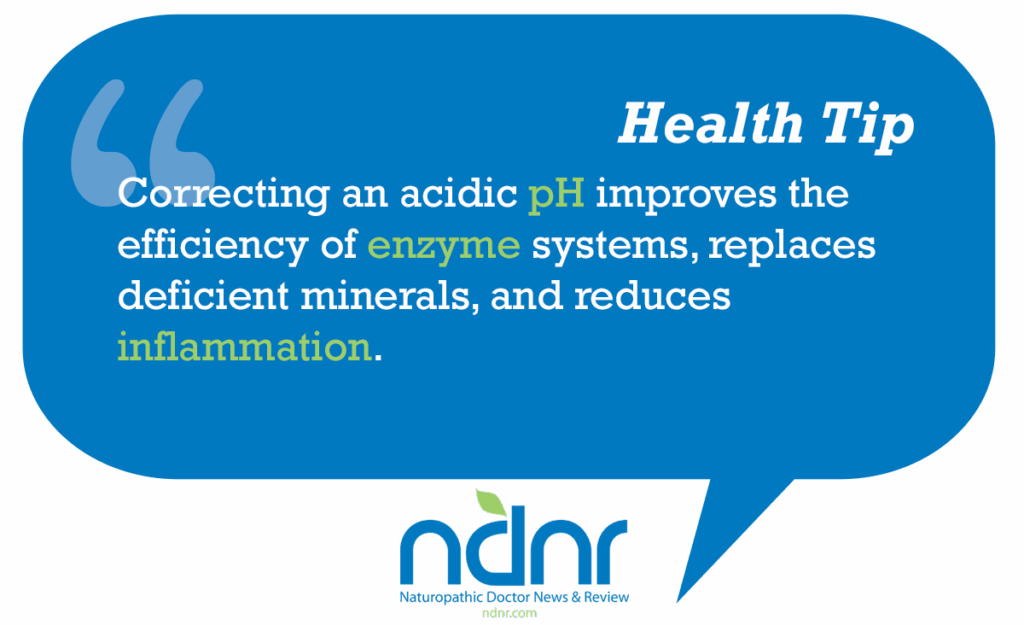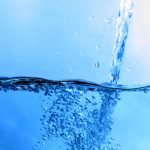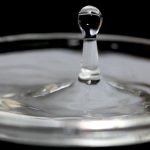Is Your Body Raining Acid?
pH Balance and Detoxification
Tom Ballard, RN, ND
Acid rain is a known piece of our global environmental problem. Toxic chemicals are released into the atmosphere, where they react with other chemicals, which are then returned to earth as an acid rain that devastates the ecosystem of lakes, rivers, and forests. Damage to the ecosystem further contributes to acid rain and the downward environmental spiral that threatens our very existence.
Likewise, we are each a personal ecosystem, a chemical soup that optimally functions when all the necessary elements are available and in balance. There is ample evidence to conclude that toxins harm our individual ecosystems, creating an analogous internal acid rain that contributes to chronic ill health.
Acid-alkaline balance is an important concept in natural medicine that is seeing increasing support in the medical literature. Unfortunately, in my experience, it is commonly misunderstood or ignored by NDs. It is also an area of confusion for patients, rife with hype for various diets, alkalinizing supplements, and expensive water-transforming machines. This is unfortunate because acid-alkaline balance influences our health and is something we have control over through various therapies, including detoxification.
The Importance of Acid-Alkaline Balance
Enzymes function optimally within fairly narrow pH ranges. For instance, the pH range is 7.3 to 7.5 for blood, 3.8 to 4.5 for the vagina, and 7.2 to 7.8 for semen. Varying from these ranges contributes to loss of function, tissue integrity, and microorganism resistance.
Dr Tim Arnett wrote in the Proceedings of the Nutrition Society: “It has been known since the early 20th century that systemic acidosis causes depletion of the skeleton, an effect assumed to result from physio-chemical dissolution of bone mineral.”1(p511) In other words, acid-alkaline balance is so critical for health that the body will go to extraordinary lengths, such as stealing calcium from bone, to maintain an optimal pH.
The effects of an acidic internal environment are seen throughout the body. When one system is stressed, another responds. For example, Dr Arya M. Sharma noted in his extended abstract “Dietary Factors and Metabolic Acidosis”: “Because of the high acid content of most diets, the kidney is faced with the responsibility of excreting…[excess acid].”2(p1926)
Environmental toxins, dietary imbalances, stress, and other factors trigger internal acid rain, which in turn triggers inflammation and results in further acidification. As the body becomes more acidic, enzymes bog down, slowing vital functions, especially communications between cells. With inefficiency comes chaos. The person falls into an acidic downward spiral of increasing inflammation and, if not reversed, overt disease.
The Acid Life
Julie, a 54-year-old patient of mine, was born with a urine pH of 6.8 and a saliva pH of 7.0. Then life happened.
Some of Julie’s life she had little or no control over. She lives in a world with fewer trees and with more synthetic chemicals. She also happened to be born poor in a neighborhood with lots of chaos and violence. That increased her stress, enough to raise her blood pressure. As with many poor neighborhoods, Julie’s was on “the wrong side of the tracks,” meaning it was closer to toxic industries. All these life circumstances had an acidifying influence on her body.
At the same time, Julie did not learn the importance of consuming enough water or fresh vegetables. By choice and learned behavior from advertising, she consumed too much sugar and other acidifying foods. Along the way, she developed a chronic tooth infection. Over the course of years, these influences slowly rained acid into Julie’s internal environment to acidify her body.
At first, certain homeostatic processes compensated for the acid life. By stealing alkalinizing minerals from bones and teeth, Julie’s body lessened the effect of her acidifying world, but the rising acid level eventually lowered her pH.
Now Julie is 40 years old, and the acid life has caused her to gain weight. With fat comes more acid. Next she discovered that her blood pressure was high and then her blood glucose level. These supply more acidifying elements to her acid pool.
Remer et al3 and Remer and Manz4,5 showed that calcium and magnesium urinary excretion is increased in humans with a high acidic level. Low calcium and magnesium levels are known to predispose to heart rhythm fatalities, high blood pressure, dysglycemia, migraines, and osteoporosis.
Vormann’s research group found that a significant amount (up to 50%) of magnesium is lost from the bones—the main storage compartment.6 Looking at this from another angle, Vormann and colleagues also showed that older persons have a reduced capacity to eliminate acid elements.6 This double insult—less magnesium and decreased acid elimination—renders the elderly particularly vulnerable to acidosis.
For Julie, the loss of magnesium directly contributed to her loss of glucose and blood pressure control. Kidney damage from cadmium, mercury, and other toxic metals also increased her magnesium excretion.
Julie’s situation is analogous to the local lake that has become contaminated by toxic runoff from a nonorganic farm or factory. From a distance, the lake looks cool and refreshing, but no one who knows what is in it will dare go for a swim. Julie’s inner chemistry, a lake of enzymes and other vital elements, wishes it did not have to swim in itself.
Another way to think of acid is as an inflammation component. Inflammation is an acid-generating process. Because inflammation is the genesis of most chronic diseases, pH monitoring and control are important.
Alkalinizing the System
Several options are available for correcting pH balance. These include the following:
Detoxification
A number of population studies have found that literally everyone who is tested has some degree of chemical or metal toxicity. The question is how severe the problem is and whether it is significantly affecting health. Ideally, all patients are tested for toxins, but in reality economic considerations make it necessary for physicians to rely on less expensive testing methods.
Xenobiotics trigger oxidative damage and, although not well studied, an acidic condition.7,8 While the specifics of detoxification methods are beyond the scope of this article, pH monitoring offers an inexpensive method to gauge the success of detoxification treatments.
Nutrition
Food choices influence the pH of the body. Eaton and Konner9 and Eaton and Eaton10 traced the acidifying effect as diets changed from the Paleolithic diet to the standard American diet.
An ideal diet is composed of a balance of acid and alkaline foods. Quality of food is also a factor influencing pH. Factory farming produces vitamin- and mineral-depleted foods that contribute to the acid pool. Organic foods contain more alkalinizing vitamins and minerals. Processing of foods also removes alkalinizing vitamins and minerals. Our ancient ancestors, who were hunters-gatherers, are believed to have consumed diets higher in alkalinizing nutritional cofactors. According to research by Deanna M. Minnich, PhD, and Jeffrey S. Bland, PhD, processing of foods has resulted in a “…net acid load relative to the diets of the ancestral pre-agricultural Homo sapiens.”11(p62-65)
While nutrition is important for acid-base balancing, it is not the only factor, despite what your patients may read on the Internet. Julie is an example of numerous patients I have seen who eat a mostly vegetarian diet, yet her urine and saliva were quite acidic. In fact, she was so concerned about eating an alkaline diet that she was becoming deficient in protein. She mistakenly considered all protein “acid forming” and dangerous. (Whey, for example, is actually slightly alkaline.) Furthermore, Julie was ignoring other acidifying influences, such as chronic dysbiosis, a tooth infection, excess weight, chronic stress, and high mercury levels. All the vegetables in the pea patch could not overcome these factors.
Alkalinizing Supplements
Supplements that rapidly alkalinize the body are useful. I prefer an organic vegetable–based powder as a green drink or as a concentrated alkalinizing mineral powder.
Because most patients are not consuming recommended levels of fruits and vegetables—5 to 7 servings daily—I usually ask them to supplement with an organic dehydrated green drink. Juicing is an option for those with the time and resources. If after 1 month I have not seen a significant shift in their urine and saliva, I use a concentrated supplement containing an effervescent combination of calcium, magnesium, potassium, and malic acid in a base of dehydrated vegetables and fruits. This usually reverses the acidification within 1 or 2 weeks, and patients report feeling better.
It is important to remember that, when essential nutrients like calcium and magnesium move out of storage, there is more space for toxic metals to move in. Therefore, supplying adequate calcium and magnesium is a form of detoxification.
Research by Berardi et al12 demonstrated an alkaline influence of plant-based supplements. Urine pH levels increased from 6.1 at week 1, 6.2 at week 2, and 6.3 at week 3.
Paul Cheney, MD (Charlotte, North Carolina), Jay Goldstein, MD (Anaheim, California), Daniel Peterson, MD (Incline Village, California), and I are observing success with a combination of malic acid and magnesium for patients with chronic fatigue (unpublished data, 2011). These patients tend to be highly acidic and will see their urine and saliva alkalinize during treatment.
Water Alkalinizing Machines
There are several machines on the market that are advertised to alkalinize water. Some of them are quite expensive, running several hundred dollars. I consider these machines a poor choice for the following 2 reasons:
Most drinking water is not highly acidic in the first place. Changing water from pH 6.5 to 7.5, for instance, will have little or no effect on the alkalinity of your body. Other factors have a far stronger effect, unless you are drinking gallons of water daily, which is not advisable.
For the price of several hundred dollars for these machines, your patient could buy a lot of alkalinizing supplements. Better yet, he or she could pay for a consultation with you about other factors affecting an acidic condition.
Who Will Stop the Acid Rain?
While not diagnostic, a patient’s pH is an indicator of overall health. Ongoing monitoring of pH is a useful method for evaluating the effectiveness of detoxification and other treatments. You will see the pH return to normal as the patient feels better. If the pH is not correcting, then treatment needs to be modified. Monitoring pH also provides an opportunity for the patient to take part in the management of his or her return to wellness.
Correcting an acid pH helps patients feel better. It improves the efficiency of enzyme systems, replaces deficient minerals, and reduces inflammation.
As with treating any disease, the most fruitful solution to an acid excess is addressing the underlying causes. Look particularly for toxic conditions, such as occult infections and heavy metals, but do not ignore the liver, digestion, and even stress as sources of acidifying elements. Diet and alkalizing supplements are also important for reestablishing and maintaining a healthy pH balance.
 Tom Ballard, RN, ND, graduated from Bastyr University (Kenmore, Washington) in 1982 and is the director of Pure Wellness Centers (www.PureWellnessCenters.com). He has lectured internationally, and his articles have appeared in various publications. Tom is the author of Nutrition-1-2-3: Three Proven Diet Wisdoms for Losing Weight, Gaining Energy, and Reversing Aging (CreateSpace, 2009) and The Last Quack (CreateSpace, 2009), the first naturopathic suspense novel. Contact him at [email protected].
Tom Ballard, RN, ND, graduated from Bastyr University (Kenmore, Washington) in 1982 and is the director of Pure Wellness Centers (www.PureWellnessCenters.com). He has lectured internationally, and his articles have appeared in various publications. Tom is the author of Nutrition-1-2-3: Three Proven Diet Wisdoms for Losing Weight, Gaining Energy, and Reversing Aging (CreateSpace, 2009) and The Last Quack (CreateSpace, 2009), the first naturopathic suspense novel. Contact him at [email protected].
References
Arnett T. Regulation of bone cell function by acid-base balance. Proc Nutr Soc. 2003;62(2):511-520.
Sharma AM. Dietary factors and metabolic acidosis [extended abstract]. Nephrol Dial Transplant. 1996:11(9):1926-1927. http://ndt.oxfordjournals.org/content/11/9/1926.full.pdf. Accessed October 13, 2011.
Remer T, Berkemeyer S, Rylander R, Vormann J. Muscularity and adiposity in addition to net acid excretion as predictors of 24-h urinary pH in young adults and elderly. Eur J Clin Nutr. 2007;61(5):605-609.
Remer T, Manz F. Estimation of the renal net acid excretion by adults consuming diets containing variable amounts of protein. Am J Clin Nutr. 1994;59:1356-1361.
Remer T, Manz F. Potential renal acid load of foods and its influence on urine pH. J Am Diet Assoc. 1995;95:791-797.
Vormann J. Magnesium: nutrition and metabolism. Mol Aspects Med. 2003;24(1-36):27-37.
Jones OA, Walker LA, Nicholson JK, Shore RF, Griffin JL. Cellular acidosis in rodents exposed to cadmium is caused by adaptation of the tissue rather than an early effect of toxicity. Comp Biochem Physiol Part D Genomics Proteomics. 2007;2(4):316-321.
Ballantyne B, Marrs TC, Syversen T, eds. General and Applied Toxicology. 3rd ed. Hoboken, NJ: John Wiley & Sons; 2009.
Eaton SB, Konner M. Paleolithic nutrition: a consideration of its nature and current implications. N Engl J Med. 1985;312:283-289.
Eaton SB, Eaton SB III. Paleolithic vs. modern diets: selected pathophysiological implications. Eur J Nutr. 2000;39:67-70.
Minich DM, Bland JS. Acid-alkaline balance: role in chronic disease and detoxification. Altern Ther Health Med. 2007;13(4):62-65.
Berardi JM, Logan AC, Rao AV. Plant based dietary supplement increases urinary pH. J Int Soc Sports Nutr. 2008;5:e20. http://www.ncbi.nlm.nih.gov/pmc/articles/PMC2585554/?tool=pubmed. Accessed October 13, 2011.










